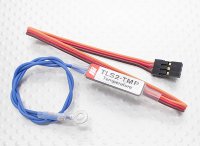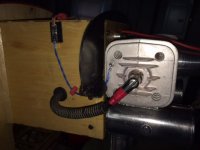ryan_m
100cc
I'm just starting to experiment with telemetry settings a little bit, and wanted to ask the experts here the best way/place to connect a temperature sensor to the motor. I have an EME70 twin that I want to mount it on. I gather the back of one of the cylinders is probably the hottest spot, and so I had planned on mounting it there. Is that correct? Towards the top of the cylinder, near the combustion chamber was my plan.
The temp sensor is designed to be bolted on, and is a small ring mount terminal. I had thought about drilling a small hole in one of the cooling fins and bolting it on directly to the fin. Are there any better ways?
This is the sensor:
The temp sensor is designed to be bolted on, and is a small ring mount terminal. I had thought about drilling a small hole in one of the cooling fins and bolting it on directly to the fin. Are there any better ways?
This is the sensor:


